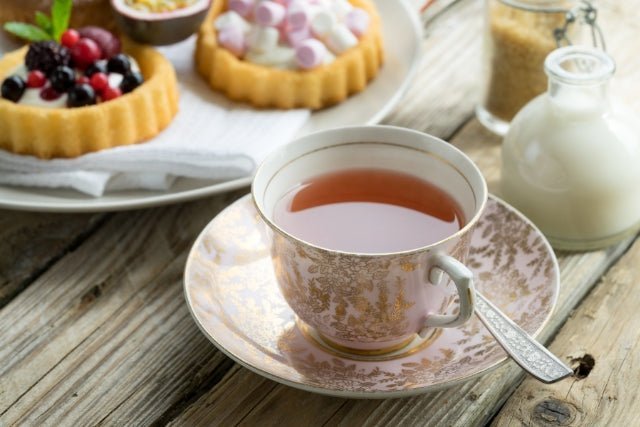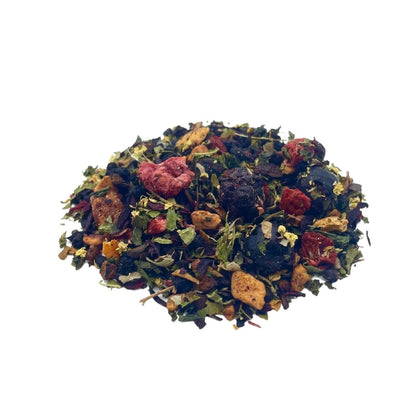

Tea is more than just a drink, it is a cultural experience that has been enjoyed for centuries around the world. From the traditional tea ceremonies of Japan to the mint tea of Morocco, tea has played a significant role in shaping culture and tradition. In this article, we will take a journey through 10 global tea traditions, exploring the history, customs, and significance of each one.
The Tea Ceremony: Japan's Time-Honoured Tradition

The Japanese tea ceremony, also known as the Way of Tea, is a traditional ritual that has been practised for centuries. It involves the preparation and serving of green tea, known as matcha, in a ceremonial setting. The ceremony is steeped in symbolism and etiquette and is seen as a way to cultivate mindfulness and appreciate the beauty of the present moment. The tea ceremony is typically performed in a tea house or a traditional Japanese room and is led by a tea master who prepares the tea and guides guests through the ritual.
Afternoon Tea: A British Tradition with a Royal Touch

Afternoon tea is a British tradition that dates back to the early 19th century. It typically consists of a light meal of sandwiches, scones, and pastries served with tea or coffee. The tradition is said to have originated with Anna, the seventh Duchess of Bedford, who would become hungry in the late afternoon and request a small meal to be brought to her. The practice caught on among the upper classes and became a popular social event. Today, afternoon tea is often served in grand hotels and tea houses and is sometimes accompanied by live music or other entertainment.
Chai: The Spiced Tea of India

Chai, also known as masala chai, is a spiced tea that is popular throughout India and parts of Asia. It is made by brewing black tea with a mix of spices, such as ginger, cardamom, cinnamon, and black pepper, along with milk and sugar. The exact recipe can vary depending on the region and the individual preparing it. Chai is often sold by street vendors and is considered a staple drink in India, typically consumed multiple times a day. It is also believed to have medicinal properties and is often consumed for its supposed health benefits.
Yerba Mate: The National Drink of Argentina

Yerba mate is a traditional South American tea that is particularly popular in Argentina, Uruguay, and parts of Brazil. It is made from the leaves of the Ilex paraguariensis plant and is typically consumed from a hollowed-out gourd called a mate, through a metal straw called a bombilla. The tea is bitter and stimulating and is said to have a similar effect to coffee. It is often consumed in social settings and is considered a symbol of national identity in Argentina.
Turkish Tea Culture: A Daily Ritual

Turkish tea culture is an integral part of daily life in Turkey, where it is consumed multiple times a day. It is typically brewed in a small pot called a çaydanlık and poured into small glasses called fincan. The tea is usually black and is often served with a glass of water and Turkish Delight. Consuming tea is considered a symbol of hospitality and is often offered to guests as a sign of goodwill. The traditional way of pouring tea from a great height is considered to be a symbol of generosity. This practice is less popular now but still can be found in some places.
Moroccan Mint Tea: A Refreshing Tradition

Moroccan mint tea, also known as Berber whiskey, is a traditional drink that is popular throughout Morocco. It is made by brewing green tea with fresh mint leaves and a generous amount of sugar. The tea is typically served in small glasses and is often accompanied by pastries or sweets. The preparation and serving of mint tea is considered an art form in Morocco and is often performed with great ceremony and hospitality. It is a common practice to offer mint tea to guests as a sign of welcome and hospitality.
Russian Samovar: A Time-Honoured Tradition of Tea-Making

The samovar is a traditional Russian tea-making device that is still commonly used today. It is a large metal urn that is heated by charcoal or electricity and is used to brew and serve tea. The tea is typically brewed in a small pot and poured into cups. Samovar tea is often consumed in the afternoon and evening and is often accompanied by sweets or pastries. The tradition of drinking tea from a samovar is steeped in history and is seen as a symbol of Russian hospitality.
Korean Tea Ceremony: A Cultural Experience

The Korean Tea Ceremony, also known as "darye," is a cultural experience that is deeply rooted in the history and tradition of Korea. The traditional way of brewing tea is by using a "ddukbaegi," a small earthenware pot that is heated over a small charcoal stove. The tea is usually green, and is often served with traditional Korean sweets such as "yakgwa" or "songpyeon." The Korean tea ceremony is also an important part of social gatherings, business meetings, and religious ceremonies. It is a symbol of unity and friendship, and people often sit together for hours to enjoy tea and conversation.
Thai Iced Tea: A Sweet and Refreshing Tradition

Thai Iced Tea, also known as "cha yen" in Thai, is a sweet and refreshing tradition that is widely consumed in Thailand. The tea is made by brewing strong black tea, often with added spices such as star anise and cardamom, and then sweetening it with sugar or condensed milk. The tea is then poured over ice and often served with a splash of evaporated milk. This traditional drink is commonly found in street vendors and local markets, as well as in restaurants and cafes. It is considered a staple of Thai culture and is often enjoyed as a refreshing break from the heat. It's also a popular drink that is served along with street food and traditional Thai dishes.
The Chinese Gongfu Tea Ceremony: A Masterful Art Form

The Chinese Gongfu tea ceremony is a traditional ritual for preparing and serving tea. It is characterized by the use of small Yixing clay teapots and cups, as well as a focus on the aesthetics of the tea-making process. The ceremony typically involves a series of precise steps, such as selecting and rinsing the tea leaves, warming the teapot and cups, and pouring the tea in a specific manner. The goal of the ceremony is to fully appreciate the taste, aroma, and appearance of the tea, as well as to foster a sense of peace and tranquillity. It is often performed in a relaxed, meditative setting, and is considered a form of art in China. If you've made it this far, then you're probably craving a cup of delicious quality tea.

